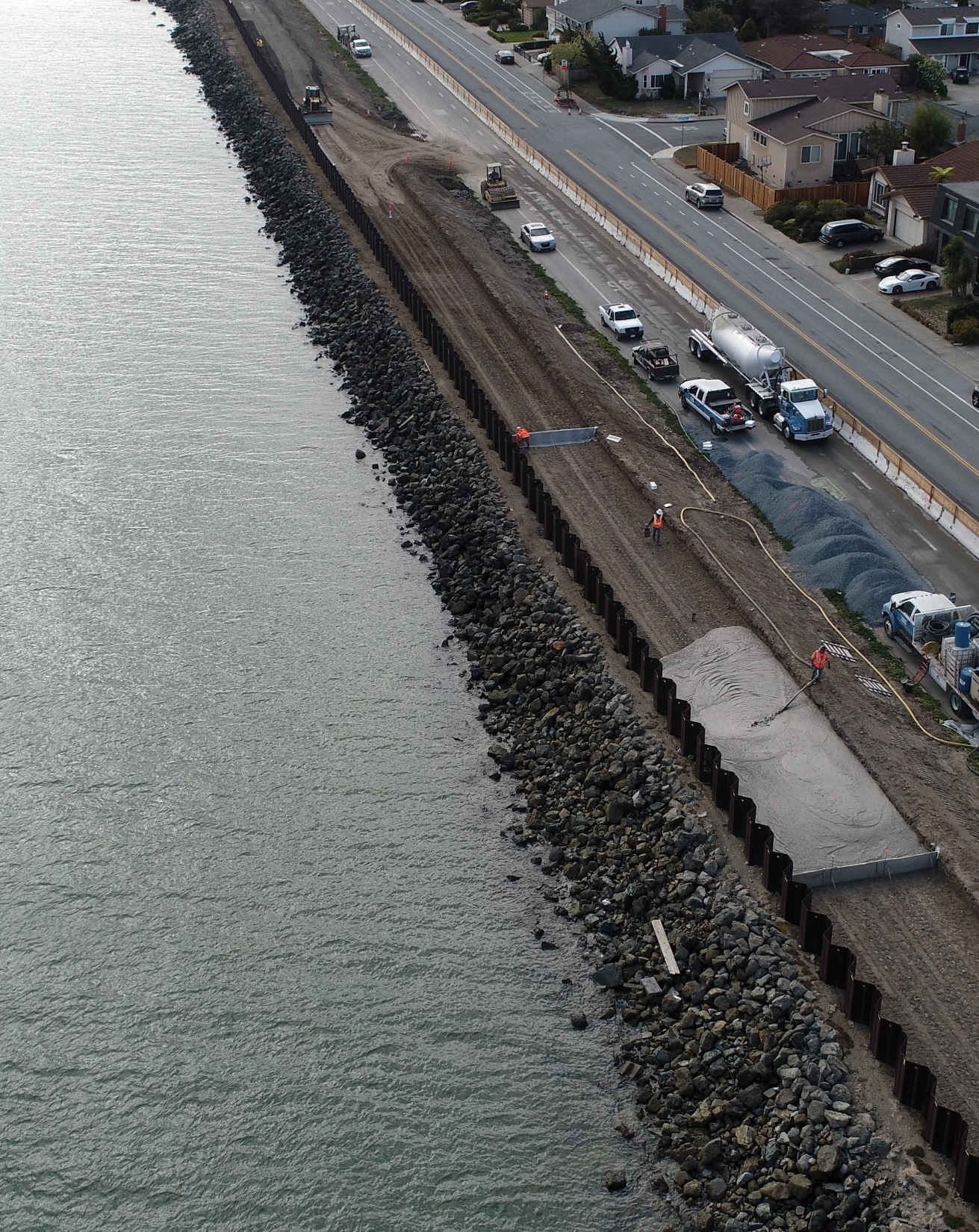Foster City Levee Improvements Project
Smart Engineering Meets Coastal Protection: Reinforcing Foster City’s Levee with Innovative Concrete
Project Description and Need:
The Foster City Levee Improvements Project was initiated to address critical flood protection needs in a city uniquely vulnerable to rising sea levels. Foster City, located on a man-made peninsula surrounded by the San Francisco Bay, has long relied on its levee system to safeguard homes, schools, businesses, and essential infrastructure from storm surges and high tides. However, in 2014, the Federal Emergency Management Agency (FEMA) determined that the existing levee did not meet minimum flood protection standards. This assessment threatened to reclassify the area as a flood zone, potentially imposing mandatory flood insurance requirements on property owners.
To prevent this, the city embarked on a comprehensive $90 million improvement project, approved by voters in 2018. The project aimed to raise and reinforce the levee to meet FEMA standards and projected sea level rise through 2050. This included constructing steel sheet piles, concrete floodwalls, and earthen embankments, enhancing the levee's resilience against both storm surges and seismic activity. Additionally, the project involved widening and redeveloping the Bay Trail, integrating recreational amenities to maintain public access and scenic views.
Completed in early 2024, the improvements have successfully restored FEMA accreditation, ensuring continued flood protection and preventing the financial burden of mandatory flood insurance for residents. The project stands as a testament to proactive urban planning in the face of climate change and rising sea levels.
Concrete Usage within the Project:
Innovative Use of Lightweight Cellular Concrete in the Foster City Levee Improvement Project
The Foster City Levee Improvement Project is a landmark example of innovative civil engineering, particularly in its pioneering use of lightweight cellular concrete (LCC) to enhance flood protection while addressing challenging geotechnical conditions. Foster City, a man-made peninsula in San Francisco Bay, faced urgent levee upgrades to meet FEMA flood protection standards and prepare for projected sea-level rise. Traditional fill materials posed significant risks, including excessive weight on soft soils, settlement issues, and difficult construction logistics. The project team turned to lightweight cellular concrete as an innovative solution that combined structural reliability, constructability, and sustainability.
LCC is a low-density, flowable concrete created by mixing a stable foam into a cement-based slurry, resulting in a material significantly lighter than conventional concrete. This characteristic was critical for the Foster City levee, allowing the levee elevations to be raised without overloading the existing soil foundation. The lightweight nature of LCC minimized the risk of differential settlement, a key factor in maintaining long-term levee integrity. Its flowable consistency allowed efficient placement in complex geometries and constrained areas, improving construction speed and reducing labor-intensive compaction.
The project strategically employed varying densities of LCC to meet the specific engineering requirements of different levee sections, ranging from ultra-light 30 pounds per cubic foot mixes to denser 90 PCF mixes. This flexibility allowed the team to optimize performance while balancing structural demands with geotechnical constraints. Beyond its technical advantages, LCC contributed to sustainability goals by reducing the volume of heavier fill materials, lowering transportation impacts, and minimizing the project’s overall carbon footprint.
Completed in early 2024, the levee improvements successfully restored FEMA accreditation, safeguarding thousands of residents, businesses, and critical infrastructure from potential flood hazards. By leveraging lightweight cellular concrete, the project exemplifies how innovative material selection can overcome complex engineering challenges, enhance resilience against climate change, and provide long-term public safety benefits. The Foster City Levee Improvement Project sets a benchmark for coastal infrastructure projects nationwide, demonstrating that thoughtful engineering, material innovation, and sustainability can work together to deliver both functional and resilient urban design.
Above: Enhanced flood protection meant raising the height of the 6.5-mile levee without overloading the soil. Lightweight cellular concrete made it possible, strengthening the system against storm surges and seismic activity.
Above: Lightweight cellular concrete allowed the levee elevations to be raised without overloading the existing soil foundation.


